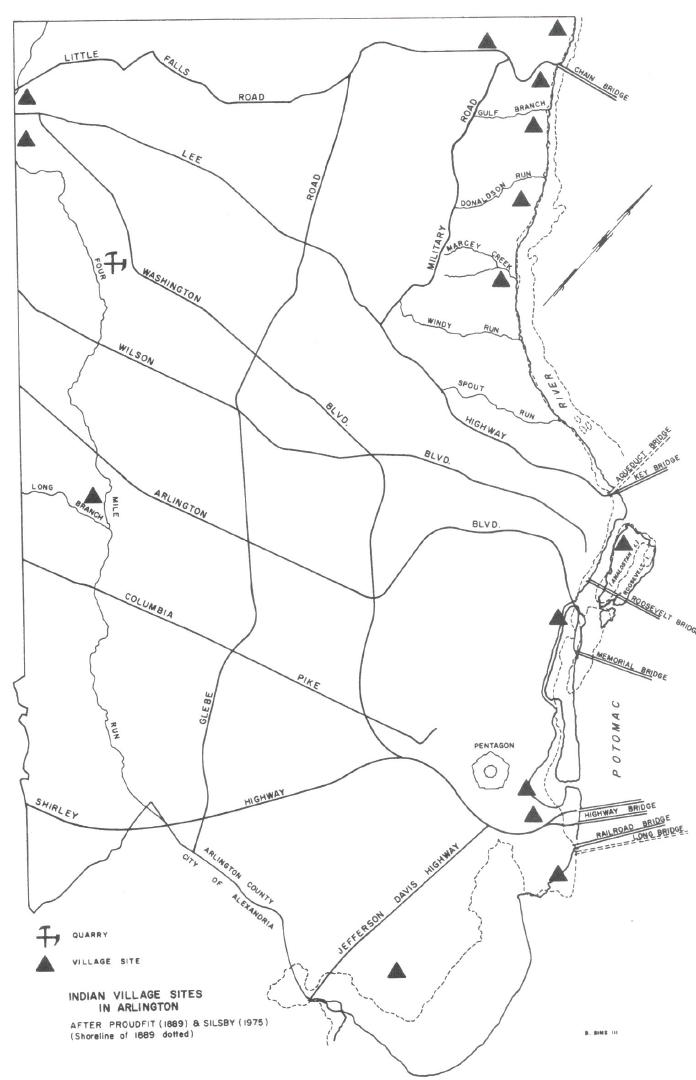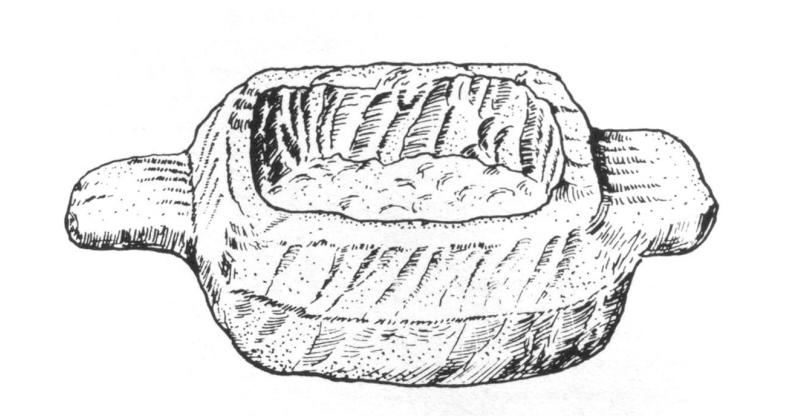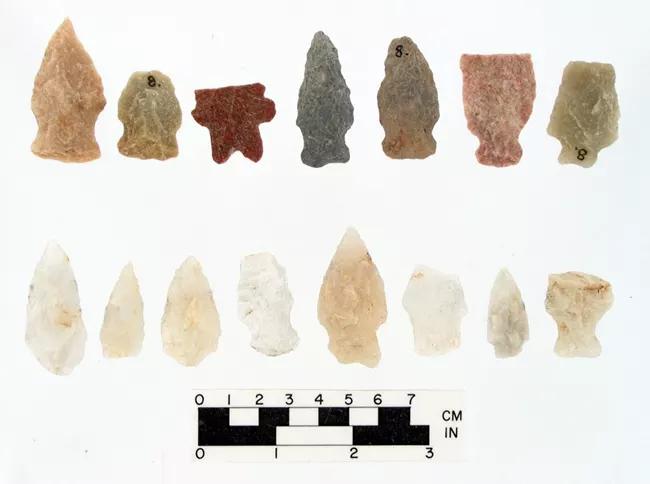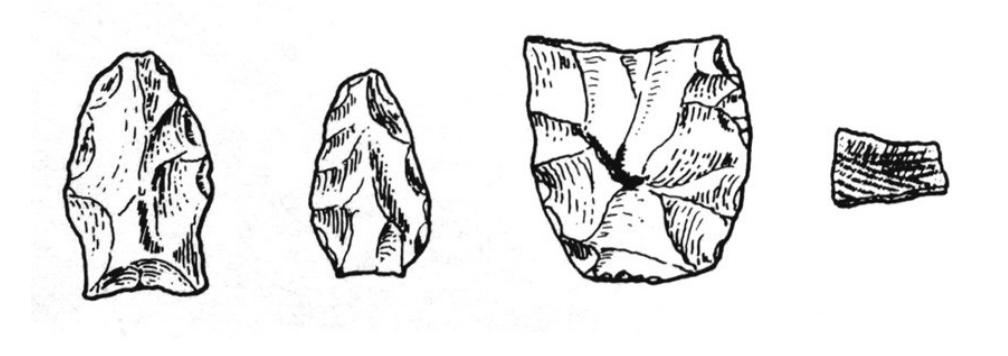Proudfit Falls

Much of our pre-historic knowledge of Native Americans in Arlington comes from the research and writings of Samuel Vincent Proudfit (1846-1934). Proudfit was an archaeologist who had gained notoriety for researching the indigenous people who lived along the Missouri River in Iowa. In the early 1880s, he returned to Washington to work at the Interior Department. Proudfit was among a small group of archaeologists, including Willian H. Holmes (1846-1933) and Elmer R. Reynolds (1863-1911), who focused on the archaeology of the quartzite and soapstone quarries throughout the area. Quartzite is a locally available stone that can be chipped into a sharp-edged tool, such as ax heads or arrowheads. It is harder to work with than Flint but more common. Soapstone is a soft rock, relatively easy to cut and shape, used to make cooking pots, bowls and pipes.
Proudfit's best-known article, “Ancient Village Sites In The District Of Columbia...” described the ready availability of archaeological artifacts in the area. He explained the chief clue he used to locate a native village: “In addition to the stone relics which this field affords, it should be observed that an abundance of pottery, in fragments, is to be found—one of the unfailing evidences of permanent aboriginal occupation.”
In 1889 Proudfit spent some time researching sites along Four Mile Run in Arlington, near the neighborhood of Madison Manor. "At a point one mile below Falls Church, Virginia, on the old Febrey estate, I found a small but interesting soapstone workshop. It is located on a hillside overlooking Four-Mile Run and about one-fourth of a mile below a recently worked soapstone quarry. Large pieces of unworked stone and fragments of unfinished vessels covered the ground, which occupies an area of not more than half an acre in extent. No perfect vessels were found, and the best specimen obtained was a small core worked out from the interior of a vessel in its construction. Several quartz implements suited for working the stone were found mingled with the debris."
While the Madison Manor site did not reveal any evidence of a permanent village, it has served as a reminder that the presence of Native Americans was pervasive in Arlington. Today, the only reminder of the archeological research is a waterfall feature of Four Mile Run called Proudfit Falls.
Images




